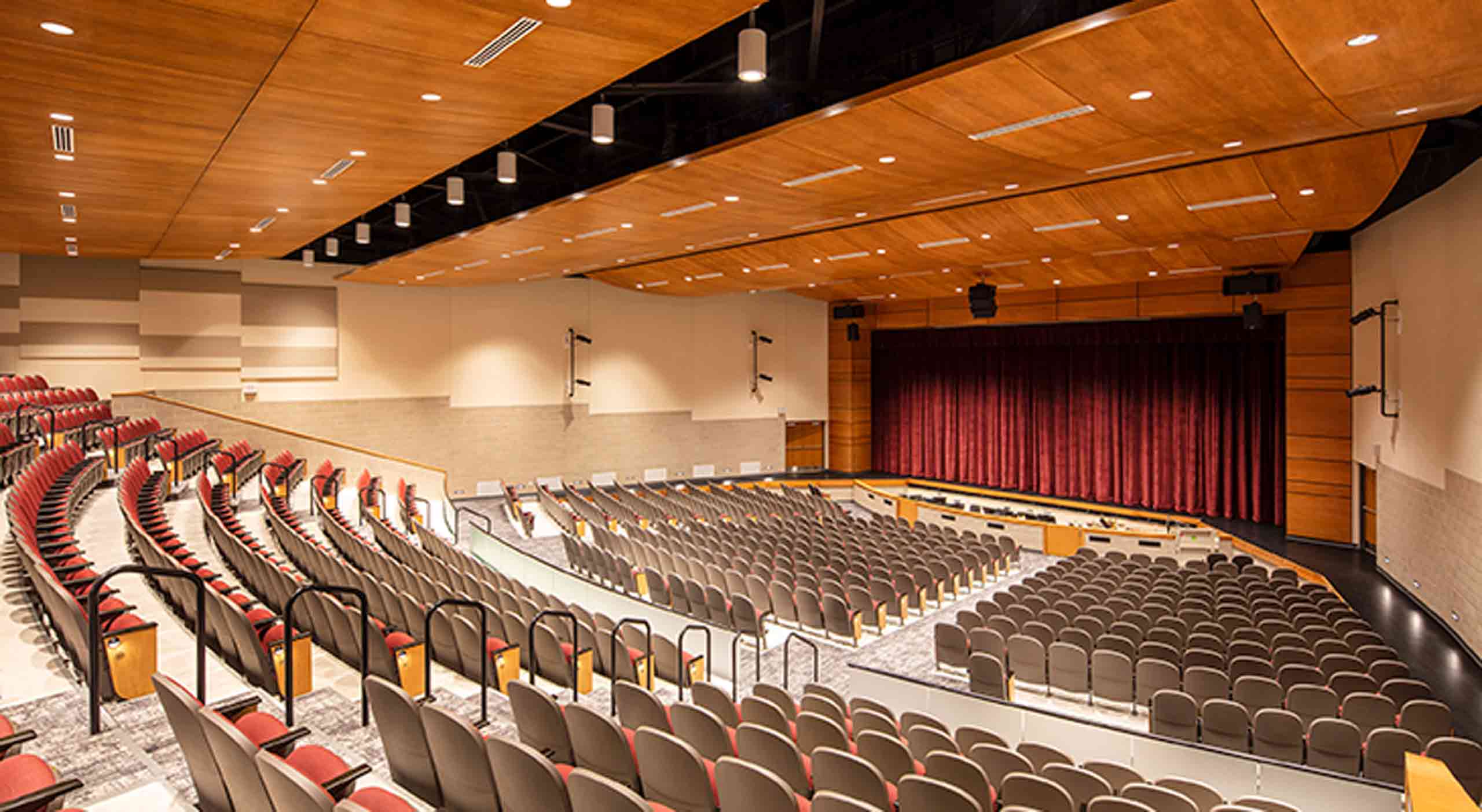
Expanded and renovated Bartlett Performing Arts Center strengthens Moline High School curriculum, brings City of Moline “vital hub of creativity and engagement”
Moline High School’s 62-year-old auditorium has a new look and a new name—the Bartlett Performing Arts Center creates more opportunities for Moline-Coal Valley School District 40 students. It also benefits the entire Moline community and Quad Cities region as an education and entertainment venue.
On March 7, over 150 members of the Moline-Coal Valley School District 40 community gathered to celebrate completion of the 47,000-square-foot facility.
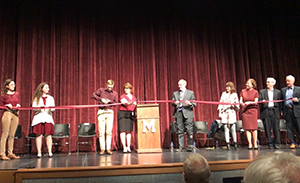
Moline High School Principal Trista Sanders said, “From the classrooms to the multiuse and performance spaces, from the set shop to the theater rigging and technology, we now truly have a state-of-the-art area for the arts and we’re thrilled to share such a tremendous facility with the community.”
Dr. Deborah Bracke, chairman of the Robert E. Bartlett Family Foundation, called the center “a vital hub of creativity and engagement, a stage on which our hopes and dreams for the City of Moline can be achieved.”
The Performing Arts Center, designed by Legat Architects and built by Russell, stems from a partnership between Moline-Coal Valley School District and the Robert E. Bartlett Family Foundation.
Among those who participated in the planning and design were board and foundation members, students, teachers, and administrators.
Patrick Brosnan, president and CEO of Legat, said, “Throughout the process, we asked, ‘What’s right for students? How does it fit the curriculum? How does it fit the community?’ The answers to these questions influenced everything from the seats and flooring to the ceiling and infrastructure.”
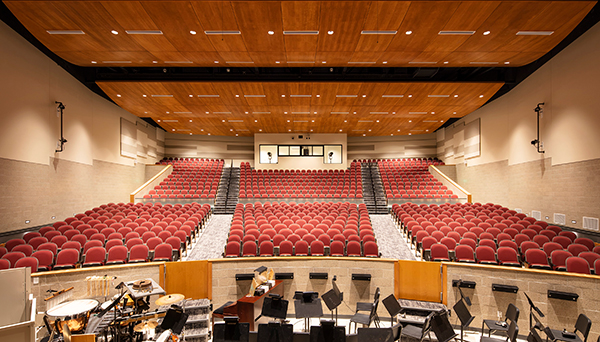
A Revived Regional Landmark

The star of the Performing Arts Center is the rejuvenated 6,700-square-foot auditorium, which features 800 stadium-style seats and all-new audiovisual systems.
“Theatergoers in the back of the old auditorium had trouble seeing the stage and hearing the performers,” said Legat’s Jeff Sandberg, project manager. “The renovations significantly increase the floor slope to create excellent views from every seat in the house, plus the new systems provide crystal-clear sound.”
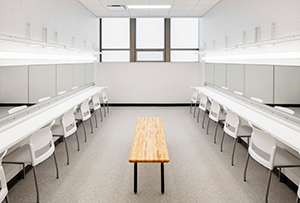
The renewed auditorium has four large wood veneer “clouds” that stretch between the stage and the back wall to further improve acoustics. Every surface in the new theater is shaped to allow a person in the back of the theater to hear someone on stage speaking in a normal voice without a microphone. This “sound shaping” was modeled by Legat’s consultants (Schuler Shook, Talaske, Advanced Communications), which found the ideal slope and shape to maximize the experience of every audience member.
Auditorium improvements also include handicap upgrades with seat-to-stage accessibility and designated seating areas for people in wheelchairs. Supporting spaces include an adjacent scene shop with garage doors that open directly to the stage and outdoors, a new dressing and makeup rooms, and storage.
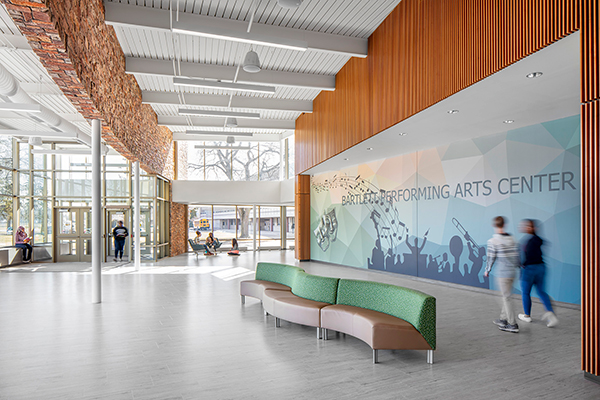
River-inspired Lobby
A new lobby, part of the 12,400-square-foot addition, winds between the Performing Arts Center’s two entries and separates performance and instructional spaces.
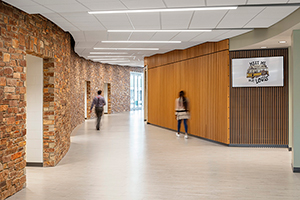
As patrons approach the facility on the evening of a performance, a curving glass wall that highlights lobby activity encourages participation and builds anticipation for the evening’s performance. The lobby displays a wall graphic and an adjacent digital “wall of fame” that allows visitors to learn about Moline High School’s accomplished graduates with distinction.
During the open house, many guests admired the curving stone wall in the lobby. This “river wall,” inspired by Moline’s location between two rivers, starts outside the building and runs the length of the lobby to connect both entrances.
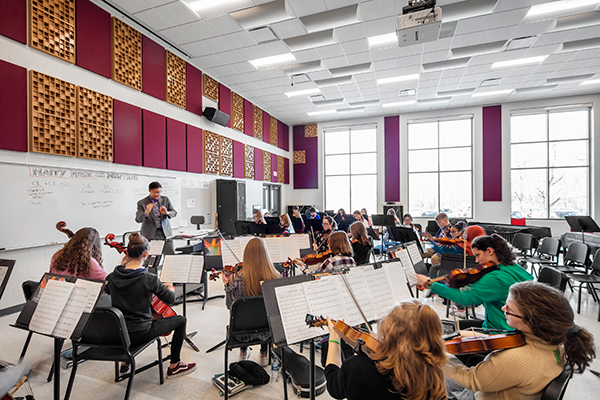
Fine Arts Expansion
Moline High School’s old instrumental music and choral rooms were crowded, overheated, and noisy. The new air-conditioned replacement rooms in the addition offer much more space. Higher ceilings improve acoustics and the instrumental music space has a new mechanical system and more room for percussion instruments and storage.
Also part of the addition is a space that is new to the school: a multipurpose room that doubles as a black box performance space. This room, equipped with a small stage and audiovisual/lighting systems, hosts smaller performances and practice sessions when the larger auditorium is booked. Dance, cheer, and other groups can also use the black box for rehearsals.
Offices, practice rooms, and storage spaces are located between the classrooms.
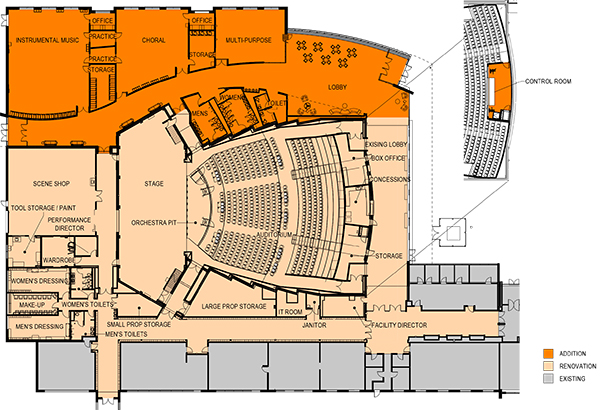
A Wish Fulfilled
The Performing Arts Center was named after philanthropist, arts enthusiast, and businessman Bob Bartlett, a figure who devoted much of his time and resources for the betterment of Moline and its residents. His influence can be seen in everything from establishment of the John Deere Classic (charity golf tournament) and sponsorship of nursing student scholarships to donations to institutions such as schools, Two Rivers YMCA, and the Boys and Girls Club of the Mississippi Valley.
At the event, Board of Education President Kate Schaefer said, “According to Bob’s daughter, Susan, her father’s fondest wish was to establish an arts center in Moline. Thanks to Bob Bartlett, his generosity, and the Robert E. Bartlett Family Foundation established in his honor, his vision for the Performing Arts Center has become a reality.”
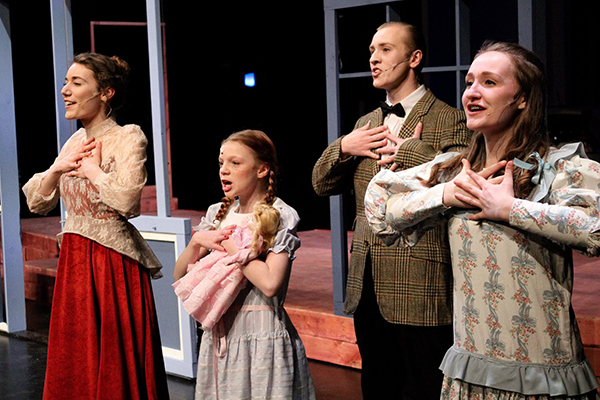
A Grand Center for the Quad Cities
At the dedication ceremony, Ben Klocke admitted that he and his fellow Moline High School students had trouble saying goodbye to the old auditorium because of the many memories it has instilled. However, Klocke also pointed to the future of the new facility.
“The Bartlett Performing Arts Center is not only for Moline High School,” he said. “It is for the community too. This grand center will host many great concerts and shows by members of the artistic communities in the Quad Cities.”
Contact us to learn more about performing arts centers and innovative educational designs or comment below to share your thoughts on this post.


